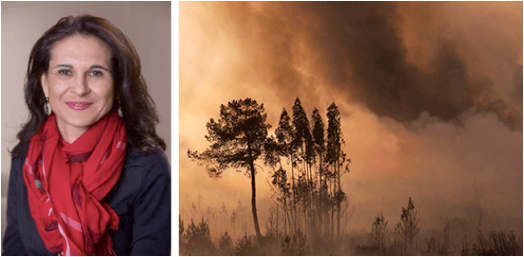As wildfires increase in frequency and severity due to climate change, more communities are threatened by prolonged exposure to harmful levels of smoke. To identify the areas at highest risk, a team of researchers from Yale and Harvard Universities, including Biostat’s Francesca Dominici, used fire-prediction and advanced atmospheric modeling to identify air pollution caused by wildfires and track the likely movement of smoke.
The team coined a new term, “smoke wave,” to describe two or more consecutive days of unhealthy levels of fine particles (PM2.5) from fires. Under future climate change conditions, the team found that more than 82 million individuals will experience a 57% and 31% increase in the frequency and intensity, respectively, of Smoke Waves, with counties in Northern California, Western Oregon and the Great Plains likely to suffer from the highest rates of exposure.
The study points to the potential health impacts of increasing wildfire activity and the importance of taking proactive measures. According to Dominici, “If we can figure out who is most at risk, we can start thinking about smoke evacuations and early alert systems for hospitals and local primary care physicians.”




